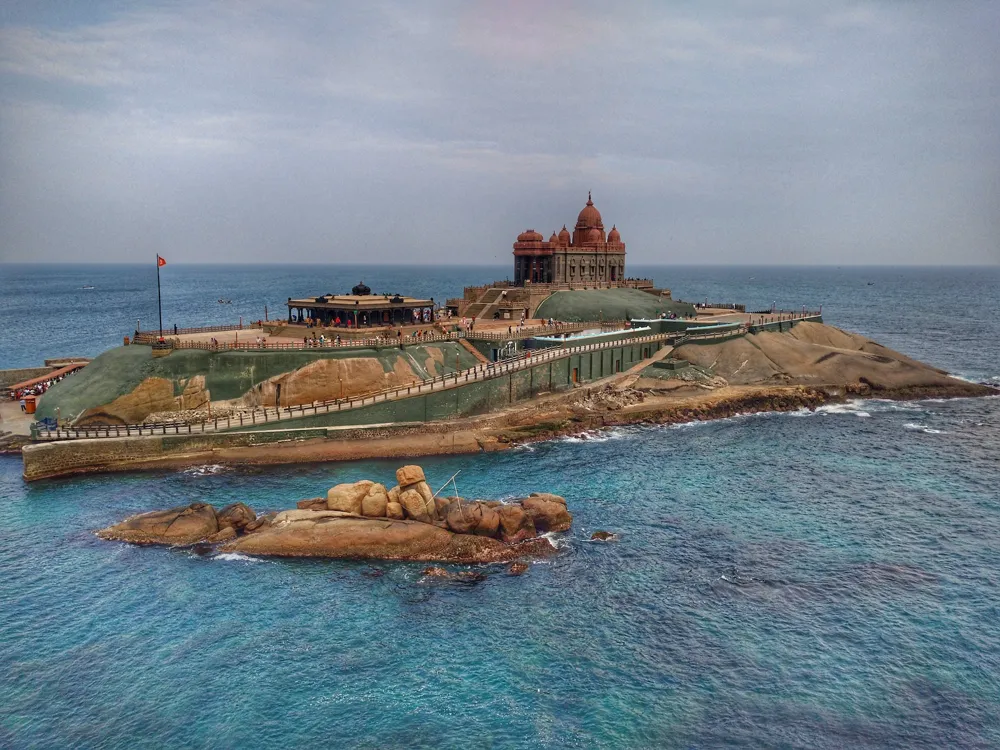The Observatory of Trivandrum, located in Kerala, India, is a historic astronomical observatory. Established in the 19th century, it stands as a testament to the region's rich scientific heritage. The observatory is renowned for its architectural beauty and the significant role it has played in the development of astronomical studies in India. Visitors can explore a range of astronomical instruments and exhibits that offer insights into the cosmos. The architecture of the Trivandrum Observatory is a blend of traditional Indian and colonial styles, reflecting the era of its establishment. The building is notable for its distinctive dome, designed to house the telescopic equipment. The use of local materials and the adaptation of the structure to the tropical climate of Kerala are evident. The observatory's layout and design facilitate both astronomical observations and the visitors' experience. It's advisable to check the observatory's visiting hours and any scheduled public observation sessions in advance. Special astronomical events and workshops can enhance your visit. Carry a hat and sunscreen to protect against the sun, especially if your visit includes daytime outdoor activities. A small backpack with water and snacks can be handy. Photography may be restricted in certain areas. Always ask for permission before taking photos, especially of the telescopic equipment and exhibits. The Observatory of Trivandrum is accessible by various means of transport. For those traveling by air, the nearest airport is the Trivandrum International Airport, from where you can hire a taxi or take public transport to the observatory. If you are coming by train, the Trivandrum Central railway station is well connected to major cities in India. Local buses, auto-rickshaws, and taxis are convenient options for reaching the observatory from different parts of the city. Read More:Overview of Observatory of Trivandrum, Kerala
Architecture of Observatory
Tips When Visiting Observatory
Planning Your Visit
What to Bring
Photography
How To Reach Observatory
Observatory
Trivandrum
Kerala
₹ 9,822 onwards
View trivandrum Packages
Weather :
Label : Must Visit
Tags : Museum
Timings : 9:00 AM - 5:00 PM (Closed on Sundays and national holidays)
Time Required : 1-2 hrs
Entry Fee : Adults: INR 10,
Children: INR 5
Planning a Trip? Ask Your Question
Trivandrum Travel Packages
View All Packages For Trivandrum
Top Hotel Collections for Trivandrum

Private Pool

Luxury Hotels

5-Star Hotels

Pet Friendly
Top Hotels Near Trivandrum
Other Top Ranking Places In Trivandrum
View All Places To Visit In trivandrum
View trivandrum Packages
Weather :
Label : Must Visit
Tags : Museum
Timings : 9:00 AM - 5:00 PM (Closed on Sundays and national holidays)
Time Required : 1-2 hrs
Entry Fee : Adults: INR 10,
Children: INR 5
Planning a Trip? Ask Your Question
Trivandrum Travel Packages
View All Packages For Trivandrum
Top Hotel Collections for Trivandrum

Private Pool

Luxury Hotels

5-Star Hotels

Pet Friendly





















